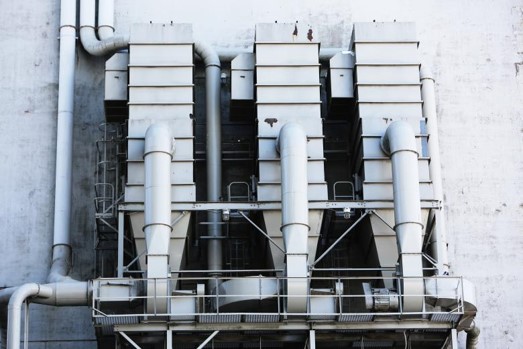
Applications
Supply systems are essential in a wide range of industrial environments, and there are many different types.
Benefits
There are many different types of exhaust systems, and therefore many different benefits. Overall, they improve air quality by efficiently removing contaminants, such as dust, fumes, and vapors. These systems are versatile, adaptable to various industrial applications, and can be tailored to meet specific operational requirements. They also contribute to regulatory compliance by controlling emissions.
Capacities
Air Flow Rates: Ranging from 500 to 100,000+ cfm
Pressure Ratings: Ranging from 5 to 100+ inWC
Temperature Handling: Up to 1,200°F (650°C) or more
Customizable to specific application needs.
Different Types
General Ventilation Supply Systems
Provide fresh air to large industrial spaces, ensuring proper ventilation and air quality.
Local Supply Ventilation Systems
Deliver targeted fresh air directly to specific areas or workstations, often used in conjunction with local exhaust systems.
Make-Up Air Units (MAUs)
Supply conditioned replacement air to compensate for air exhausted from industrial processes, maintaining pressure balance.
High-Pressure Air Supply Systems
Deliver compressed air at high pressures for use in industrial processes, pneumatic tools, and machinery.
Temperature-Controlled Air Supply Systems
Provide heated or cooled air to maintain specific temperature conditions within industrial spaces.
Humidification Systems
Supply moisture to the air, maintaining optimal humidity levels for processes such as textile manufacturing or paper production.
Dehumidification Systems
Remove moisture from the air to maintain low humidity levels in environments where excess moisture can cause issues.
Cleanroom Air Supply Systems
Deliver highly filtered, controlled air to maintain cleanliness and minimize contamination in sensitive manufacturing environments.
Blower Fan Supply Systems
Use high-powered fans to move large volumes of air into spaces, often used for cooling or ventilation in large facilities.
Air Curtain Supply Systems
Create an invisible barrier of air at openings like doors to separate environments and prevent the exchange of air, dust, or insects.
Heat Recovery Supply Systems
Capture waste heat from exhaust systems and reintroduce it into the supply air stream, improving energy efficiency.
Energy Recovery Ventilation Systems
Supply fresh air while recovering both heat and moisture from exhaust air, used to improve indoor air quality and reduce energy costs.
Oxygen Enrichment Supply Systems
Provide enriched oxygen air for processes that require high oxygen levels, such as combustion in industrial furnaces.
Gas Supply Systems
Deliver specific gases like nitrogen, argon, or natural gas for use in industrial processes, ensuring a steady and controlled flow.
Chemical Injection Air Supply Systems
Introduce chemicals into the air supply for specific applications such as odor control, air purification, or process enhancement.
Dust Suppression Air Supply Systems
Provide air mixed with water or chemicals to suppress dust in areas where dust generation is a concern, like mining or material handling.
Mist Supply Systems
Deliver fine mist to cool or humidify spaces, often used in cooling towers or evaporative cooling systems.
Pressurized Air Supply Systems
Maintain a pressurized environment in specific areas to prevent the ingress of contaminants or to support certain manufacturing processes.
Exhaust systems generally operate by drawing contaminated air from the workspace through a network of ducts and exhaust fans. The system can include various components such as filters, scrubbers, silencers, and heat exchangers to remove particulates, reduce noise, and manage temperature. The contaminated air is then either filtered and recirculated or expelled outside the facility. The systems are optimized for efficient airflow and minimizing energy consumption while also maintaining effective contaminant removal. Customization options allow for the integration of additional features like hoods, dampers, and controls to suit specific industrial processes and ensure optimal performance.
Contact us for more information or to discuss your application and receive an estimate.
